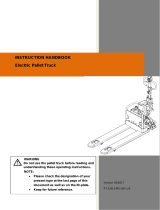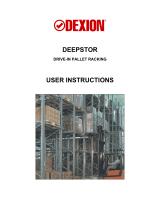Battery Maintenance 3635 Battery Maintenance
Battery Maintenance
WHEN YOU INSTALL OR CHANGE BATTERIES
• Turn the truck OFF. Be sure the coast selector is off
and the brake is applied.
• Make certain you use the correct size and weight
battery. Never operate a truck that has an
underweight or undersize battery installed.
• Never let anything metal touch the top of the cells.
You could cause sparks or do damage to the battery.
Use an insulator (such as plywood) when necessary.
• Use an approved spreader bar to place a battery in,
or remove it from, the battery compartment or a
stand. Make sure you adjust the spreader bar hooks
to fi t the battery.
USING A ROLLER STAND
• If you use a roller stand to install or remove a battery
make sure the roller stand is the same height as the
rollers in the truck's battery compartment. Also
make sure the roller stand is at least as long as
your battery.
AFTER INSTALLING YOUR BATTERY
• Replace the battery retainers. Make certain the
retainers on both sides of the truck are in place.
• Connect the battery. Turn the truck ON and check
truck operation.
Know the Hazards
Note: DELAY ON LIFT
When the battery is connected to the truck, there is
approximately a 10 second delay before lift is available.
TRUCK BATTERIES CAN BE DANGEROUS
Your truck battery produces fumes that can explode.
It also contains acid that could burn or disfi gure you.
• Do not try to install, remove, charge or service your
truck battery unless you are trained and authorized.
• Never smoke or use an open fl ame around batteries.
• Your company should provide an area where it is
safe to work on batteries. Use that area for all
battery work.
• Use protective equipment such as gloves, eye
shields, aprons etc.
BATTERY RETAINERS MUST BE IN PLACE
The battery could slide out if all retainers are not in
place. Check that both retainers are installed before
operating your truck.
COAST SELECTOR MUST BE OFF
Be sure the coast selector is off and the brake is on
before removing or installing a battery.
Continued next page...
Batteries produce explosive gas.
Do not smoke, use open flame, or
create an arc or sparks near this battery.
Ventilate well in enclosed areas and
when charging.
Batteries contain Sulfuric Acid which
causes severe burns. Do not get in
eyes, on skin, or clothing. In case of
contact, flush immediately. Get medical
attention if your eyes are affected.
DANGER





















